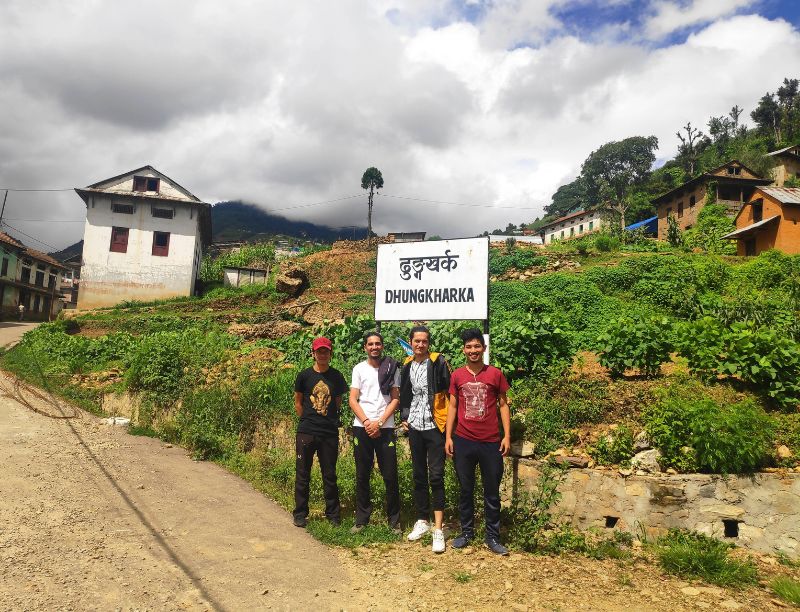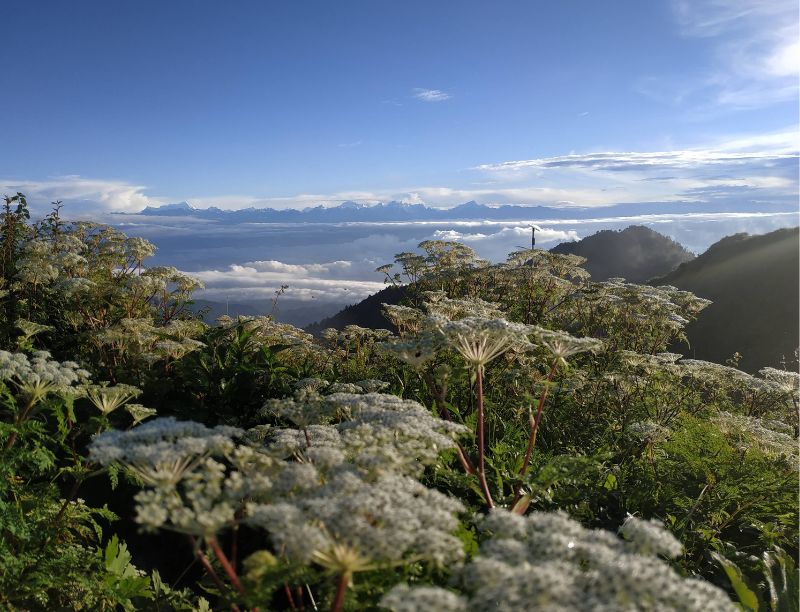Introduction
The Bethanchowk Narayanthan hike is a lesser-known yet advantageous trekking route in Nepal, offering adventurers a unique fusion of spiritual importance and scenic beauty. Nestled in the Kavrepalanchok District, this hike takes you to the summit of Bethanchowk, one of the highest hills in the region, standing at an impressive 3,000 meters above sea level. The journey to Bethanchowk Narayanthan is a physical challenge and a spiritual retreat, providing trekkers with panoramic views of the Himalayas, lush forests, and a serene environment that rejuvenates the soul.
The Starting Point: Kathmandu to Dhungkharka
The journey to Bethanchowk Narayanthan begins in Kathmandu, the bustling capital of Nepal. From Kathmandu, you can drive to Dhungkharka, a small village that serves as the hike’s starting point. The drive is an experience that offers glimpses of rural Nepal and its picturesque landscapes. The route passes through Banepa and Panauti, historic towns with rich cultural heritage. Panauti, in particular, is worth a visit for its ancient temples and traditional Newari architecture.
Also Read: A Complete Guide to Phulchowki Hike Adventure from Kathmandu
The Trail: Dhungkharka to Bethanchowk Narayanthan
The hike from Dhungkharka to Bethanchowk Narayanthan is approximately 5-6 hours long, depending on your pace and the weather conditions. The trail is well-marked but challenging, with steep ascents and descents that test your endurance and determination.
The Ascent
The first portion of the hike is a progressive ascent through terraced fields and small settlements. This section of the trail is relatively easy, enabling you to become used to the height and take in the surrounding scenery. As you ascend higher, the trail becomes steeper and more demanding, passing through dense rhododendron, oak, and pine forests. During spring, the rhododendron forests come alive with vibrant colors, adding a magical touch to the hike.

The Midway Point: Dhapcha
Midway along the hike, you will arrive at Dhapcha, a small settlement that offers a perfect spot for a short rest and refreshments. Dhapcha provides stunning views of the surrounding hills and valleys, and on a clear day, you can catch your first glimpse of the Himalayan range. This is also an excellent place to interact with the locals and learn about their way of life, which remains largely untouched by modernity.
The Final Ascent
The final leg of the ascent is the most challenging, with a steep climb that requires both physical strength and mental resilience. However, the effort is well worth it as you approach the summit of Bethanchowk Narayanthan. The trail here is narrow and rocky, demanding careful navigation. The thinner air and decreasing temperature remind you of your increased altitude as you go higher.
The Summit: Bethanchowk Narayanthan
Reaching the summit of Bethanchowk Narayanthan is a moment of triumph and exhilaration. At 3,000 meters, you are rewarded with a breathtaking 360-degree panoramic view. The snow-capped peaks of the Langtang, Ganesh, and Jugal Himal range against the backdrop of the deep blue sky and are a sight to behold. On a clear day, you can even see the distant peaks of the Annapurna and Manaslu ranges.
The summit is also home to the Narayanthan temple, a hallowed location honoring Lord Vishnu and Shiva. Though minor, the temple holds great spiritual significance for the locals and is a place of pilgrimage for many. The summit’s serene and peaceful environment and the temple’s meditative atmosphere make it a perfect spot for meditation and reflection.
The Descent: Bethanchowk Narayanthan to Dhungkharka
After soaking in the summit’s views and spiritual vibes, it is time to return to Dhungkharka. The descent, though less physically demanding than the ascent, requires careful footing, especially on the steep and rocky sections of the trail. The return journey provides a distinct angle on the scenery, enabling you to recognize the beauty of the trail from a new angle.
Flora and Fauna
One of the highlights of the Bethanchowk Narayanthan hike is the region’s rich biodiversity. The trail passes through different ecological zones, each with unique flora and fauna. Terraced fields and subtropical forests, home to various bird species and small mammals, dominate the lower sections of the trail. As you ascend higher, the vegetation changes to temperate rhododendron, oak, and pine forests. These forests are home to diverse wildlife, including deer, langurs, and, occasionally, the elusive red panda.
During the hike, look for the vibrant birdlife that inhabits the region. Birds such as the Himalayan Monal, the national bird of Nepal, and various species of pheasants, warblers, and thrushes can be spotted along the trail. The rhododendron forests, in particular, are a haven for birdwatchers, offering opportunities to observe these beautiful creatures in their natural habitat.
Cultural Significance
The Bethanchowk Narayanthan hike is not just a journey through nature but also a cultural immersion into the life of the local communities. The villages and settlements along the trail are inhabited by the Tamang and Newar ethnic groups, who have preserved their traditional way of life for generations. These communities are known for their warm hospitality and rich cultural heritage.
As you pass through the villages, take the time to interact with the locals and learn about their customs, traditions, and daily life. The traditional houses, adorned with intricate woodwork and colorful murals, reflect the unique architectural style of the region. The locals are also skilled in handicrafts, such as weaving and pottery, making excellent souvenirs and gifts.

Practical Information
Here is the following practical information:
Best Time to Hike
The best time to undertake the Bethanchowk Narayanthan hike is during the spring (March to May) and autumn (September to November) seasons. During these months, the weather is mild and steady, with blue skies and comfortable temperatures, resulting in ideal hiking conditions. The rhododendron forests are in full bloom during the spring, bringing a splash of hue to the trail, while the autumn months offer the clearest views of the Himalayas.
Permits and Regulations
While the Bethanchowk Narayanthan hike does not require special permits, you should inform the nearby police station or the local government regarding your trekking plans. This is for safety reasons and ensures that help can be provided in emergencies. Respecting the local culture and traditions.
Accommodation and Supplies
Accommodation options along the trail are limited, so carrying a tent and camping gear is recommended if you plan to stay overnight. Basic homestays may be available in some villages, offering a glimpse into the local lifestyle and cuisine. It is also essential to carry sufficient food, water, and other supplies, as shops and facilities are scarce along the trail.
Conclusion
The Bethanchowk Narayanthan hike is a hidden gem in Nepal, providing the ideal fusion of scenic beauty, vibrant culture, and spiritual serenity. The journey to the summit is challenging yet immensely rewarding, providing unforgettable experiences and memories for trekkers. Whether you are an experienced trekker or a nature enthusiast looking for a unique adventure, the Bethanchowk Narayanthan hike promises an enriching and fulfilling journey through one of Nepal’s most scenic and tranquil regions.
Read More: Namo Buddha Hike from Kathmandu: A Spiritual and Scenic Adventure


0 Comment